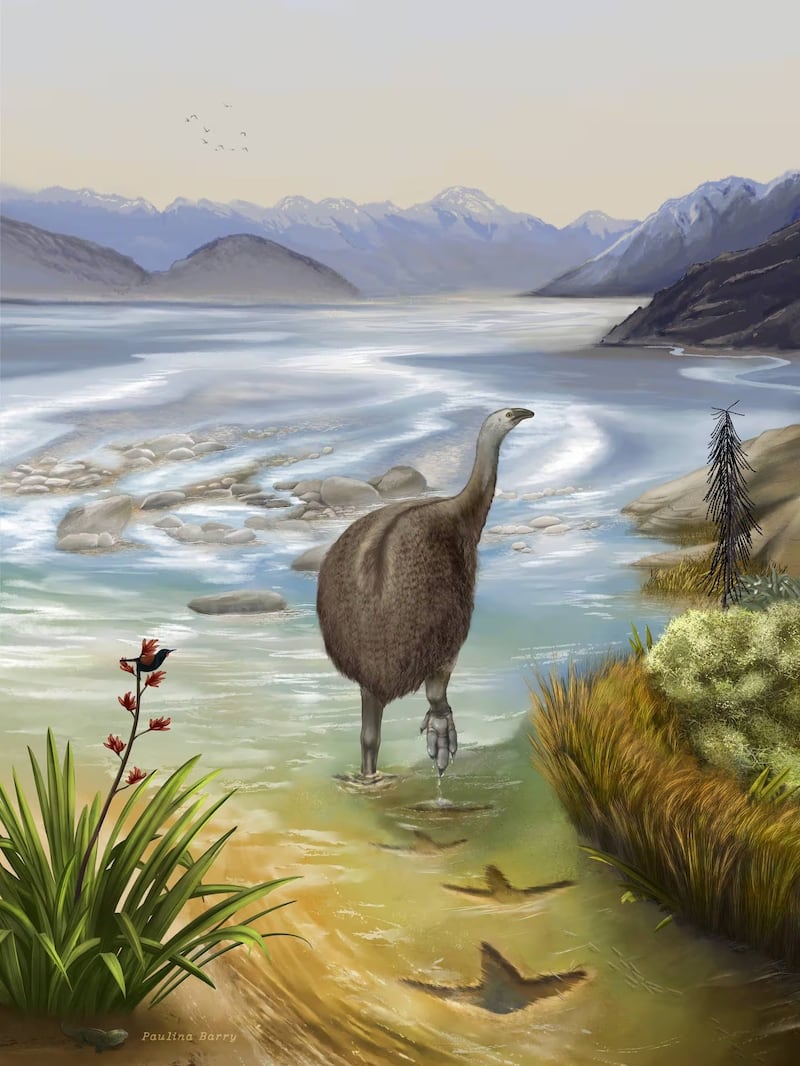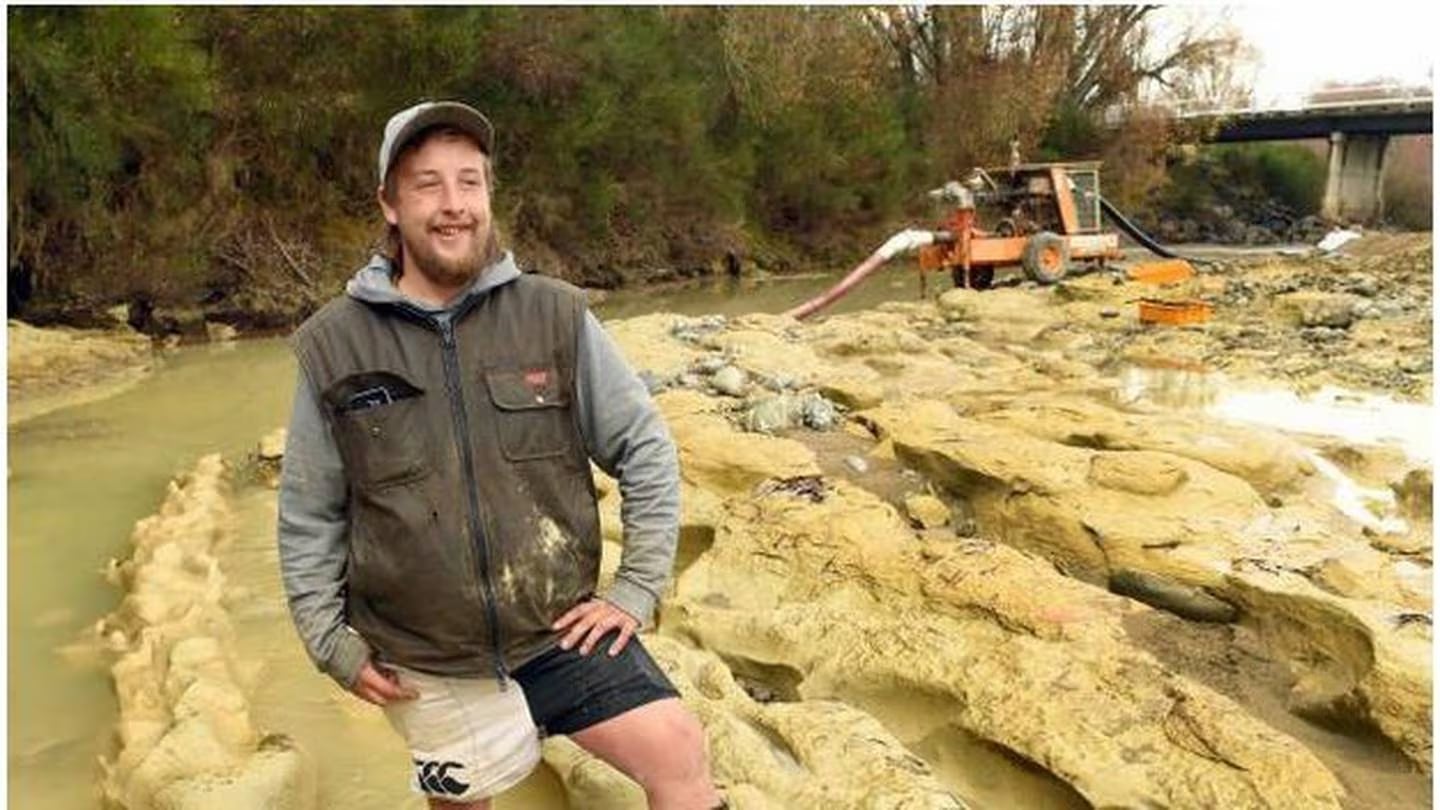When Ranfurly tractor driver Michael Johnston chanced upon some odd-looking markings in a local riverbed in 2019, he had no idea he was looking at the first footprints of our long-lost moa ever found in the South Island.
Four and a half years later, scientists have added another chapter to the remarkable story: the traces happen to be from several million years ago, and are the second-oldest reported to date.
Johnston was out taking his boss’ dogs for a swim when he spotted seven fossilised footprints in the bed of the Kyeburn River, which had likely been exposed by heavy flooding the year before.
After getting in touch with Tūhura Otago Museum natural science curator Kane Fleury over Facebook Messenger, it quickly became clear he’d stumbled upon something of major significance.
News of the find drew international headlines, but questions still lingered.

How tall and heavy was the moa? What species was it, and how long ago were those footprints cast?
In a study published today in the Journal of the Royal Society of New Zealand, Fleury and fellow researchers conclude the impressions were left by a member of the Emeidae family, most likely of the Pachyornis genus.
This would likely make it a relative of the heavy-footed moa - a variety noted for being particularly bottom-heavy with unusually short and thick legs.
To the researchers’ surprise, a 3D photogrammetry model of the fossil site later revealed the presence of a second moa, this time from another family: Dinornithidae.
Just one extremely faint print had been preserved in the riverbed, and its dimensions suggest the bird may have been a member of the Dinornis genus, which included the largest-known species of moa — the South Island giant.
Although not approaching those behemoths in weight - fully-grown females are thought to have been up to 250 kilograms - the Kyeburn precursor was still impressive at an estimated 158kg.
The trackway left by the Emeidae moa gave researchers more to work with, so, in addition to modelling its height and weight - 1095 millimetres at the hip and 85kg - they were able to estimate that it was walking at a slow 2.6km/h.

The most significant finding was that it was doing so at least 3.6 million years ago.
As most moa fossils that have been discovered happen to be dated from within the last 10,000 years, these traces offered scientists a rare glimpse into a period of moa evolution that remains poorly understood.
For Fleury, the whole experience had been “incredible”.
“A lot of luck goes into the fossilisation of footprints — conditions had to be absolutely perfect for these tracks to be preserved, and they had to be just right again to expose the fossils without destroying them,” he said.
“The public really got on board with how spectacular this find was and had heaps of questions, so it’s a great feeling to be able to follow up with some answers.”


